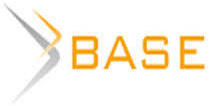Values, social expectations and backbone communications of Dagestan youth
(experience of political anthropology)
Due to the polynationality and polyethnicity of the Russian state, the behavior of the younger generation in different regions has both similarities and differences, a distinctive system of value orientations and social expectations. An example of this is modern Dagestan society, which is undergoing a powerful process of religious revival. As a result, Islam and Islamic spiritual leaders have become leaders of public opinion and authorities for the younger generation of Dagestanis. The level of well-being of young people often becomes one of the primary factors influencing their political consciousness. This article discusses the need to overcome the widespread simplistic ideas about the political life of young people in society, to present a more complex view of the situation, taking into account the new living conditions of young people and the multiplicity of meanings that converge in their political spaces. Therefore, after a critical review of some theoretical and analytical assumptions based on negative diagnoses, we will reflect on how the backbone communications of Dagestan's youth are formed and what factors influence political transformations in the modern media space, especially for young people who are seriously influenced by religious beliefs. The article uses the results of a study of the values, social expectations, and main communication channels of young people in Dagestan. This study was conducted by the Dagestan Federal Research Centre of the Russian Academy of Sciences in the cities of Makhachkala, Derbent, and Kizlyurt, as well as in the Botlikh, Derbent, Kazbek, Kizlyar, Kumtorkalinsky, and Levashinsky districts. Random sampling was used. The results of a 2022 survey of counter-terrorism experts in the Republic of Dagestan, in which one of the co-authors participated, are used.

















While nobody left any comments to this publication.
You can be first.
Bengtsson, S. (2023), “The Relevance of Digital News: Themes, Scales and Temporalities”, Digital Journalism, 13(2), 309-327. DOI: 10.1080/21670811.2022.2150254.
Figueiras, R. (2024), Young people: between news disconnection and institutional disconnection. [Online], available at: https://revistaidees.cat/en/young-people-between-news-disconnection-and-institutional-disconnection/?pdf=72670 (Accessed 22 April 2025).
Foa, R. and Mounk, I. (2019), “Youth and the Populist Wave”, Philosophy and Social Criticism, 45(9-10)? 1013-1024.
Foa, R. S., Klassen, A. J., Wenger, D., Rand, A. and Slade, M. (2020). Youth and Satisfaction with Democracy: Reversing the Democratic Disconnect?, Centre for the Future of Democracy, Cambridge.
Pfetsch, B. (2018), “Dissonant and Disconnected Public Spheres as Challenge for Political Communication Research”, Javnost – The Public, 25(1-2), 59-65. DOI:10.1080/13183222.2018.1423942
Sénécal, M. (2014), “Critique de la communication: entre connaissance et action”, Critique, sciences sociales et communication, in George, É. and Granjon, F. (eds), Mare et Martin, Paris, France, 235-264 (in France).
Shakhbanova, M. M. (2025). “Social expectations and value orientations of Dagestani youth”, State and municipal management. Scholar notes, 1, 253-262 (in Russ.).
Sharkov, F. I. and Silkin, V. V. (2025), Mezhkulturnye i etnokonfessionalnye mediakommunikatsii [Intercultural and ethno-confessional media communications], Dashkov and Co, Moscow, Russia (in Russ.).
Sharkov, F. I., Silkin, V. V., Abramova, I. E. and Kirillina, N. V. (2018), “Violation of information ecology in media space”, RUDN Journal of Sociology, 18(4), 765-775.
The ideology of terrorism and measures to counter its spread (2022), Publishing House of the RANEPA Law Institute, Rostov on Don, Russia (in Russ.).